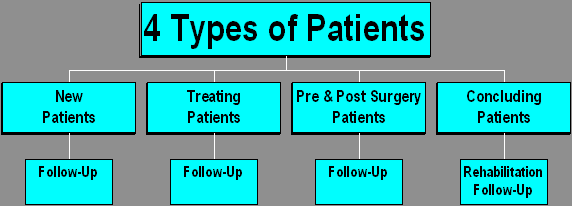|
|
|
|
|
|
|
|
When Should You Order a FE?
|
Trigger For Ordering a Functional Evaluation:
- Physician requires clinical direction.
- Need to establish a baseline study.
- Help to identify plateaus in treatment.
- Lack of patient progress.
- Pre surgery to assess specific injuries.
- Post surgery to evaluate the success of surgery.
- To determine MMI.
- Days out of work exceeds norms.
- Subjective complaints do not match physician's objective findings.
- Patient’s restrictions needed for case settlement.
- Claimant is frequently unable to sustain recommended work levels.
- Need to determine functional abilities and levels of effort within suspicious claims.
|

|

|
- Patients:
- All new patients with a musculoskeletal complaint (that the referring physician needs a FE) are recommended to be assessed on the second visit.
- Once the physician has determined a diagnosis, he/she can utilize these tests to further evaluate a patient’s condition, as well as track the patient’s progress.
- 1A. Follow up Patients:
- All new patients who are tested on the second visit can be retested within approximately 5 weeks to track patient’s progress and/or regression.
- Treating Patients:
- These tests can be recommended during the middle of treatment if the referring physician needs a FE to further evaluate a patient’s condition.
- To establish more detailed treatment protocols for patients. This is also useful to help with patient retention, as well as establishing medical necessity.
- 2A. Treating Patients Follow-up:
- All patients who are tested should be retested within approximately 5 weeks to track what progress has been made.
- Pre & Post-Surgery Patients: :
- Establish a functional baseline data study for pre-surgery. The independent test identifies functional deficits, as well as quantifies the motor and range of motion losses.
- This will demonstrate to the patient exactly how much functional loss they had pre-surgery, in comparison to post-surgery.
- 3A. Post-Surgery with Rehabilitation Follow-up:
- These tests will monitor progress through the rehabilitation process, with the overall surgical outcome upon MMI.
- Concluding Patients:
- These tests can be performed on patients who have reached MMI and/or patients with permanent impairment ratings.
|
|
|
|
|
|
|